How we use your Information
This privacy notice tells you what to expect when the All Finance Solutions website collects personal information.
It applies to information we collect about: ” visitors to our websites ” people who use our services, eg who subscribe to our newsletter or contact us using our contact form.
Visitors to our Websites
We’re aiming to explain to you: what data we are processing; why we are processing it and what we do with it; whether we will share it with anyone else; whether we will transfer it outside of the United Kingdom; how we keep your data safe; and your rights.
Our company name is All Finance Solutions Ltd. Our trading address is Houghton House, 39 The Leys, Countesthorpe, Leicester, LE8 5PJ.
Our Data Protection Officer is Mr Simon Moult at Houghton House, 39 The Leys, Countesthorpe, Leicester, LE8 5PJ. Telephone 0116 366 8520
We are a Credit Broker, authorised and regulated by the Financial Conduct Authority.
Personal Data
We process your personal data if we understand that you may be interested in purchasing our products or services. We may obtain information about you when you enquire about our products or services. Typically, the information that we obtain will be: Name, Address, Date of Birth, Employment details, bank details, household income and expenditure.
Our website may automatically collect some personal information including: details of your
browser and operating system, the website from which you visit our website, the pages that you visit on our
website, the date of your visit, and the Internet protocol (IP) address. We collect some of this information using cookies.
Telephone calls may be recorded for training purposes and may also be used to qualify any comments that were made during any conversation.
You may have sent your information directly to us, but you may have also provided your information via our supported suppliers / dealers, Agents, Brokers and Appointed Representatives who, in turn, has provided the information to us. We may provide you with marketing information about our products and services or the products and services of our selected partners;
Where we are requested to do so to perform our contract with you, we may process your information for providing a financial statement. We may process your information to comply with legal obligations including assisting HMRC, the Police and the Driver and Vehicle Licensing Agency
We may process your information to allow us to pursue our legitimate interests including but not limited to: analysing our performance to further improve our customer services; market research, training and to administer our websites; the prevention of fraud or other criminal acts; enforcing our legal rights or to defend legal proceedings and for general administration purposes. providing you with marketing information about our products and services or the products and services of our selected partners or for events.
We may disclose your information to our third-party service providers for the purposes of providing services to us or directly to you on our behalf e.g. advertising agencies or administrative service providers. When we use third party service providers, we only disclose to them any personal information that is necessary for them to provide their service and we have a contract in place that requires them to keep your information secure and not to use it other than in accordance with our specific instructions.
We may transfer your data to government or other official bodies for the purposs of complying with legal obligations, for enforcing our rights, or for the prevention or detection of a crime.
If you have expressed an interest in buying products from us or from our selected partners, we will retain your contact details and related information concerning your enquiry for 7 years from the date that we last had contact with you.
If you have purchased products from us or from our selected partners, we will keep the data relating to that purchase (e.g. order forms and invoices and related correspondence) for term of the agreement plus 7 years from the date of the contract.
If you have requested that we do not send you marketing information we will always keep sufficient information to ensure that we remember to comply with your wishes.
The periods stated for keeping data may be extended if we are required by law to keep it for a longer period.
The information that you send to us may be transferred to countries outside of the UK. By way of example, this may happen where any of our group companies are incorporated in a country outside of the UK or if any of our servers or those of our third-party service providers are from time to time located in a country outside of the UK. These countries may not have similar data protection laws to the UK. If we transfer your information outside of the UK in this way, we will take steps to ensure that appropriate security measures are taken with the aim of ensuring that your privacy rights continue to be protected. These measures include imposing contractual obligations on the recipient of your personal information or ensuring that the recipients are subscribed to ‘international frameworks’ that aim to ensure adequate protection. Please contact us if you would like more information about the protections that we put in place. If you use our services whilst you are outside the UK, your information may be transferred outside the UK to provide you with those services.
We use Cookies on our website. A cookie is a small text file which is placed onto your computer (or other electronic device) when you visit our website. This enables us to monitor how many times you visit the website, which pages you go to, traffic data, location data and the originating domain name of your internet service provider. You can find out more about the Cookies we use in our Cookies Policy available on the home page of our website. You can set your browser not to accept cookies, however some of our website features may not function as a result. For more information about cookies generally and how to disable them you can visit: www.allaboutcookies.org.
We have adopted appropriate technical and organisational measures to protect the personal data we collect and use. However, as effective as our security measures are, no security system is impenetrable. We cannot guarantee the security of our database. The transmission of information via the internet is not completely secure. Although we will do our best to protect your personal data, we cannot guarantee the security of your data transmitted to our website; any transmission is at your own risk. Once we have received your information, we will use procedures and security features to try to prevent unauthorised access
Our website may contain links to and from other websites (e.g. social media sites such as Twitter, Facebook and LinkedIn). We accept no responsibility for the way in which they process your personal data. You are recommended to check the privacy policy of each website before you submit any personal data to it.
We always aim to be as open as we can and allow people access to their personal information. Where we hold your personal data, you can make a ‘subject access request’ to us and we will provide you with: a description of it; an explanation of why we are holding it; information about who it could be disclosed to; and a copy of the information in an easily understandable form.
If you would like to make a ‘subject access request’ please make it in writing to our contact email address. We will try to deal with your request informally and quickly, for example by providing you with the specific information you need over the telephone. Unless you agree a different time, we will complete your subject access request within one month.
You will always have the right to stop marketing messages. You can update your marketing preferences by contacting us at any-time by phone, email or post.
If we hold personal data about you, but it is no longer necessary for the purposes that it was collected and cannot otherwise be justified – you have the right to request that we delete the data. If we hold personal data about you and you believe it is inaccurate you have the right to request us to restrict the data until it is verified. You also have the right to request that the data is restricted where you have a right to it being deleted but would prefer that it is restricted. Where we rely on your consent as the legal basis for processing your personal information or need to process it in connection with your contract, you may ask us to provide you with a copy of that information in a structured data file. We will provide this to you electronically in a structured, commonly used and machine-readable form, such as a CSV file.
You can ask us to send your personal information directly to another service provider, and we will do so if this is technically possible. We may not provide you with a copy of your personal information if this concerns other individuals or we have another lawful reason to withhold that information
You always have the right to complain to the personal data regulator, the ICO. You may also be entitled to seek compensation if there has been a breach of data protection laws. You can contact the ICO via their website www.ico.org.uk
This policy was last updated on 08/05/2024
Statistical analysis for marketing and website performance.



